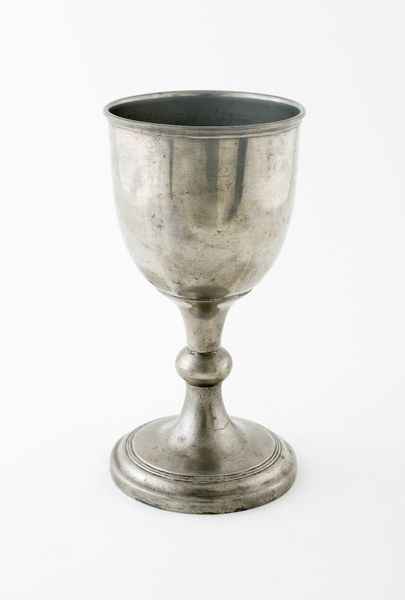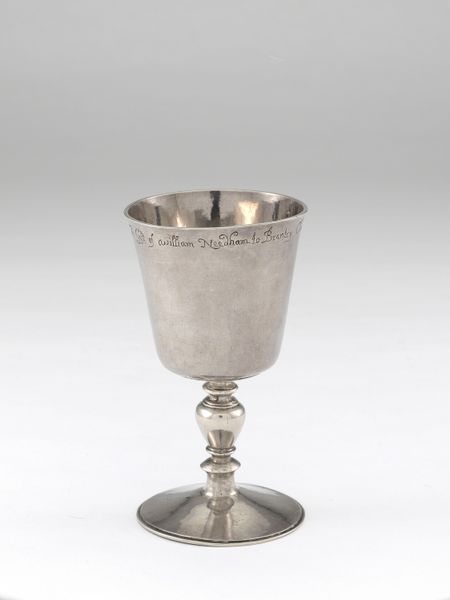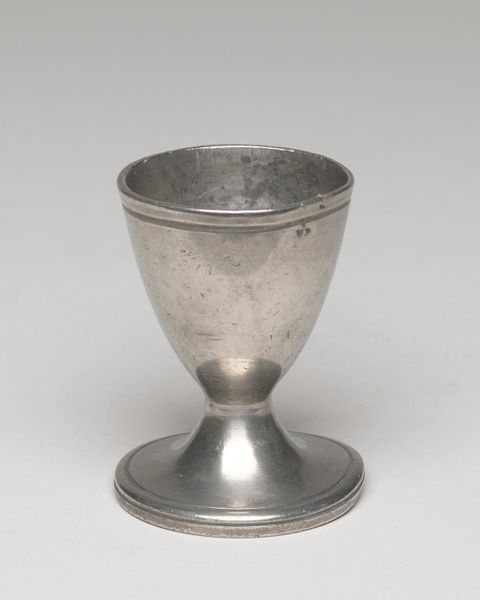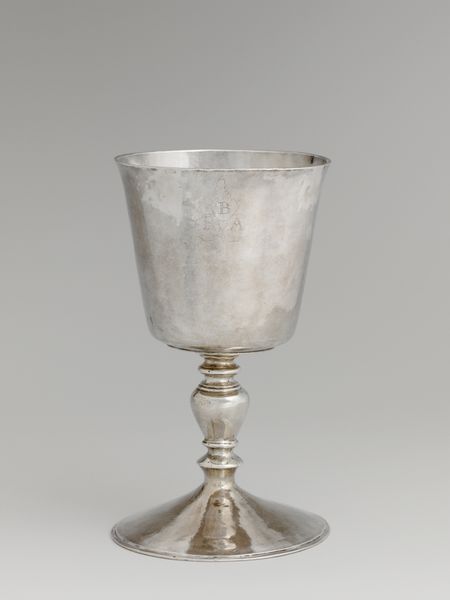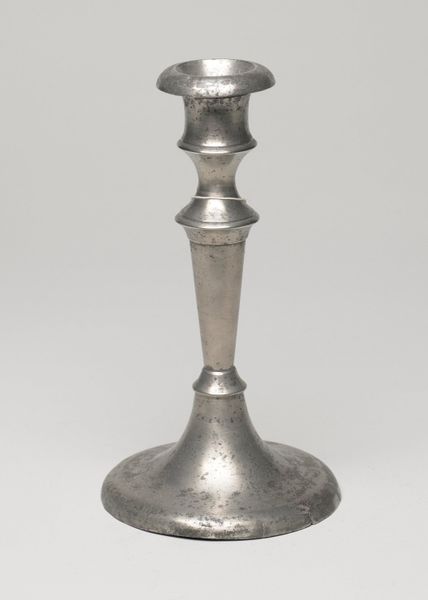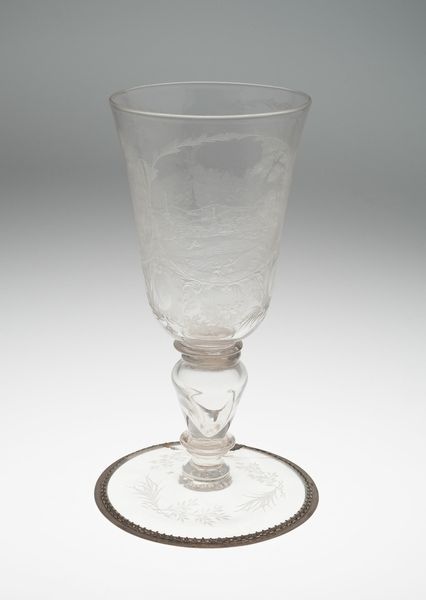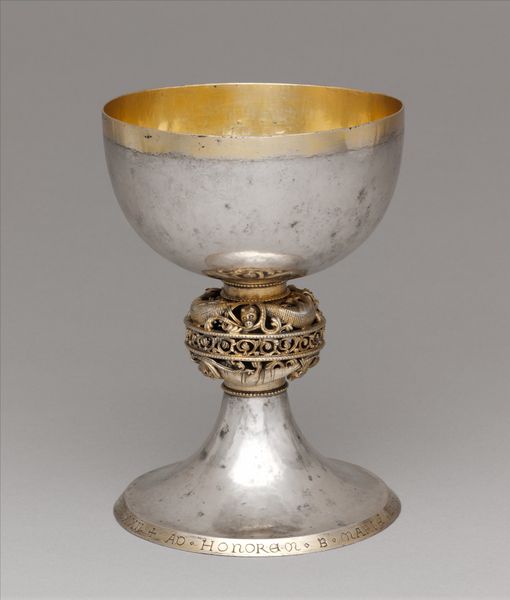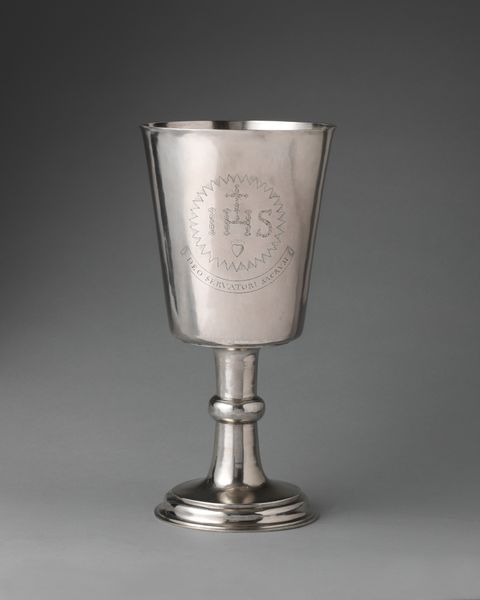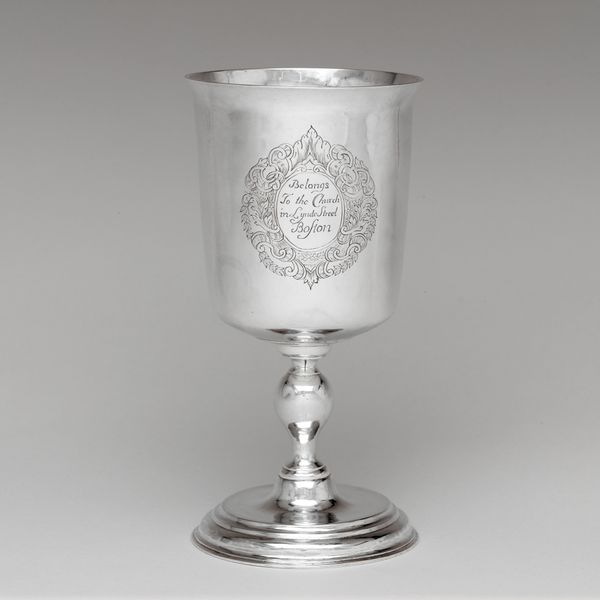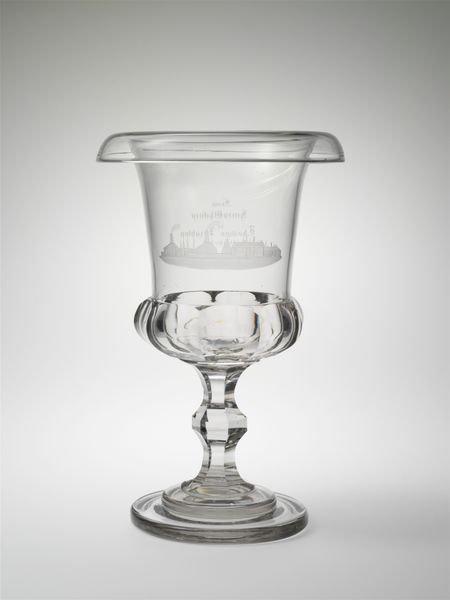
metal, sculpture
#
neoclacissism
#
metal
#
sculpture
#
history-painting
Dimensions: 22.9 × 10.8 × 10.8 cm (9 × 4 1/4 (top) × 4 1/4 (base) in.)
Copyright: Public Domain
Curator: Take a moment to observe this Communion Chalice, a remarkable object from around 1794. You'll find it residing at The Art Institute of Chicago. Editor: It strikes me immediately with its austere beauty. The cool, silvery metal and simple lines almost give off an aura of quiet contemplation. Curator: Precisely! It's an exquisite example of Neoclassical design rendered in metal. Neoclassicism, as an artistic movement, looked back to the art of ancient Greece and Rome, favoring symmetry, order, and clarity. Editor: And I can see it in the chalice’s restrained ornamentation. The overall effect is very graceful. Yet, you also sense its utility—that it wasn’t just made to look at, but to serve a specific function. Curator: Indeed, it served the crucial function of holding the wine during the Christian sacrament of Holy Communion. The chalice is not just an aesthetic object; it's loaded with religious symbolism. Consider how objects can acquire this "aura" of importance. Editor: Thinking about the communities who might have used this makes you reflect on this. I wonder what kinds of ceremonies and what hopes or beliefs it was meant to evoke. It must have held deep meaning for someone. Curator: We might never know for sure what lives this piece has witnessed or the exact hands that held it aloft. But that, in a way, adds to its quiet mystique. What do you take away from this reflection? Editor: I find it humbling. Considering how many events happened on our planet at the same time as its creation, but yet it is a calm still vessel meant for reflection.
Comments
No comments
Be the first to comment and join the conversation on the ultimate creative platform.
